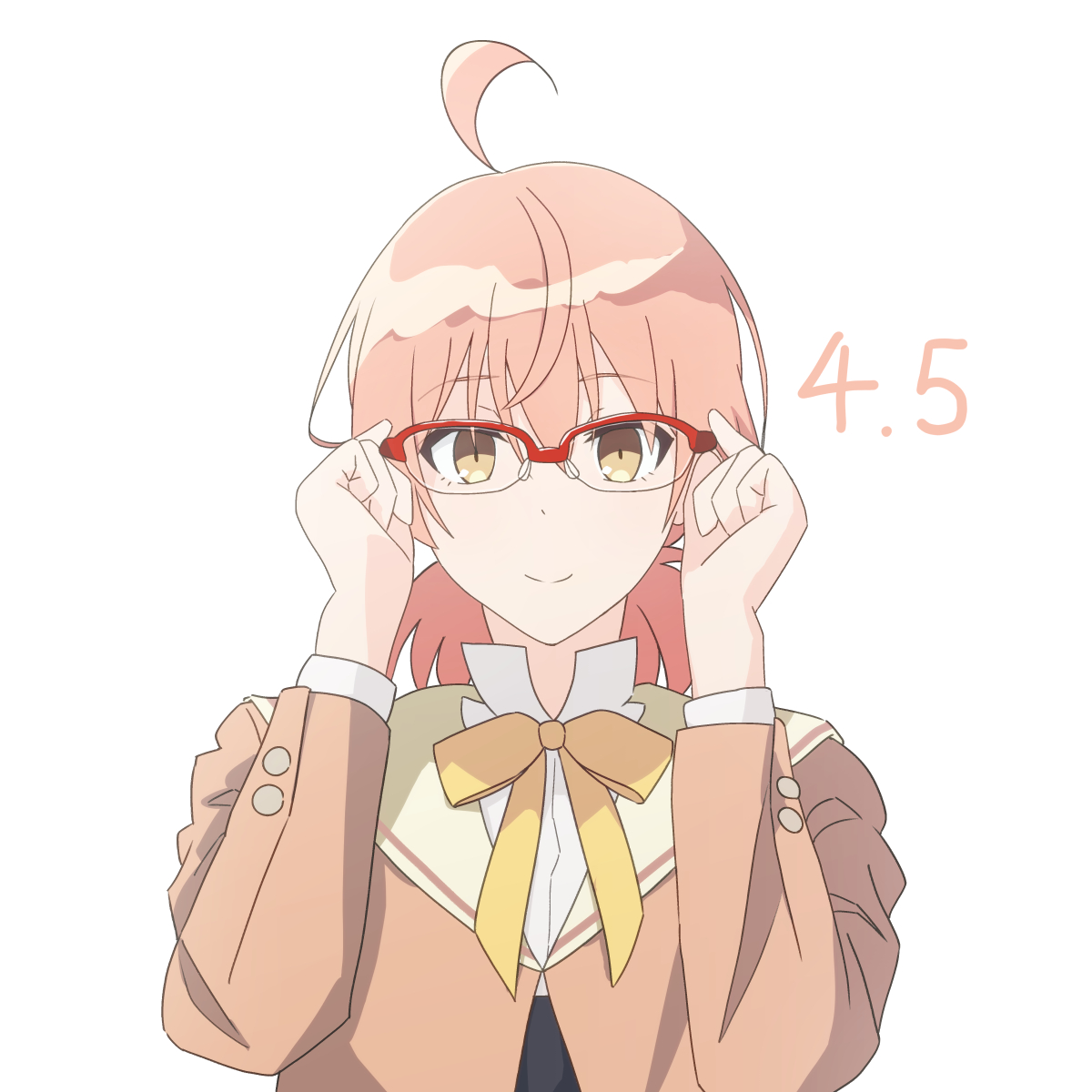Good day nice people.
I, like many I’m sure, am taking Microsoft’s discontinuation of Windows 10 support as an opportunity so switch over to Linux. As such, I have some questions about various things. I have included some context as to my personal use case at the end of the post should it be relevant.
-
Does the distro I pick matter? There seems to be a lot of debate around which distro is best but a lot of the discussion I’ve seen breaks down to what each distro comes packaged with. This confuses me as if a distro doesn’t come prepackaged with something can you not just install it? Or is there some advantage to preinstalled packages other than mild convenience? Are some components difficult to integrate into your local environment?
-
One of the more salient differences I’ve seen between distros has been what the various companies and teams include aside from installed packages (such as snap and rolling out amazon search as a defult search), and the data they choose to retain/sell. Part of the reason I’m switching is due to Microsoft’s forcing in of unwanted features and advertising. Is the company that owns whatever distro I choose likely to be a problem in the future? Are there particular ones to avoid/ones to keep an eye on?
-
I am the sort of person who does like to tinker with things from time to time but I do also want to use my computer most of the time so I’d like to end up using a mature distro. I have identified a few frontrunners in my search but I have seen conflicting information on which of them is “mature” (sufficiently stable so I spend less time fighting my computer than I do using it as well as having a large enough community and resources to help me remedy issues I might come across). Do any of these seem like they wouldn’t fit that bill? The frontrunners are: fedora, kubuntu, mint, pop and tuxedo.
-
Does linux have issues interfacing with multiple monitors? Does it handle HDR okay?
-
In terms of UI and workflow I really don’t mind putting in some time tinkering with the DE, exploring it and getting it how I like. It seems Plasma KDE might be good for this? Please let me know if this is an incorrect assessment. If it is, does it matter what DE I choose? If so, is there something you could recommend for my use case.
My use case: I have a Nvidea build (RTX 2080). I have heard this can be an issue with Linux. I also have intermediate experience with linux through university and my job (with servers) as well as tinkering with SteamOS.
Things I use/do on my PC (roughly ordered in terms of priority):
- Gaming including emulation
- Firefox
- VLC
- Spotify
- Discord
- Godot
- Visual Studio
- Git
- Photoshop cs6, audacity, davinci resolve
- Misc “Tinkering” (Handbrake, dvd burners/rippers, Really any weird thing I come across that I want to tinker with)
Thank you very much for your time and help in cleaing up my confusion.
None of that matters.
You need experience, not recommendations.
Install anything and play with it to learn.
If you will not go forward without a recommendation, Debian is fine and anything you learn will generally transfer to other distributions.
Copy that. Sounds like I’m off to set up a Boot USB.
If you can figure out how to make a Debian usb installer without help then you’ll be fine.
i think they should try Bazzite, sounds ideal
That’s good advice.
- The main fundamental differences are the package manager, the way the system is setup (partitons, immutable distros), and possibly software you don’t want installed. Aside from that, you can install basically anything on any distro. Some do make it easier than others to install new things though.
- Canonical (Ubuntu and direct spinoffs) and Manjaro are the ones I recommend avoiding, because their marketing and “general sentiment” goes against my opinions of the distros/maintainers. However, switching Linux distros (especially to another one with a similar base) is not nearly as daunting of a task as switching from Windows to Linux. Some corporate distro owners might pull something like advertising, but there’s often an easy way out (except with snaps).
- As for the distros you mentioned, Fedora, Mint, and Pop!_OS are all good options. Mint and Pop!_OS are both based on Ubuntu, which could cause issues in the future, but Mint is working on a Linux Mint Debian Edition. Aside from that, my general recommendation is to stay close to upstream. Distros further downstream tend to break more often (think spinoffs of Ubuntu, Arch derivatives, forks of Fedora, etc). There are exceptions to this rule, like when a distro stays close to upstream.
- In recent times, it should all be working okay! We’re “in the middle of a long time switch” from X11 to Wayland. Those are protocols for the way applications display to the screen. X11 is lacking features, like HDR, and can have issues with “weird” multimonitor setups. Wayland is being actively developed, multimonitor works fine, and HDR is available for some desktop environments (like KDE or GNOME). Not all distros default (or support) Wayland yet, so if you need HDR, pick a distro with KDE or GNOME as its desktop environment.
- This situation has gotten more complex with Wayland (one of the pain points still being worked on). The features you get partially depend on which DE (or wayland compositor) you choose. Previously on X11, this wasn’t the case. For Wayland DEs, KDE is moving relatively fast, with new features nearly every release. GNOME is moving slower, but should cover most people’s needs. As for tinkering around with your choice of UI/DE, there’s many options available, but KDE offers by far the easiest customization possible (it’s all in the settings menu). There’s more complex, more customizable options available, but I wouldn’t recommend them as a starting point.
- As for nvidia, it has been progressively getting better, but there are still nvidia specific issues that come up from time to time. There’s not really much you can do about it, aside from following changelogs and updating when the thing you’re running into is fixed.
Now for your list of applications:
- Gaming (through steam) works great! There’s definitely still issues, but I’d argue there’s not really more issues than on Windows, just different issues. There is one category of games that’s still problematic, games with kernel level anticheat. They do not and likely will never play on Linux. Other launchers (EA Play, Ubisoft Connect, Epic) can have their own issues, although there’s often fixes/workarounds available rather quickly.
- Firefox works just fine on Linux.
- VLC works great too, although there are other options available that are more modern or better in some ways. It’s up to you to decide what to use.
- Spotify works just fine, there’s always the website in case nothing else works, but the “app” as a flatpak or even through repos works too.
- Discord has some issues accepting that Linux exists, but have recently started making some changes with that. Most people either use Disocrd in the webbrowser (to prevent too much system access), or run a custom client like Vesktop.
- Godot works great on Linux, I don’t have much else to say about it tbh.
- Visual Studio Code too, it’s basically just a webapp. Some integrations might be slightly different (like the terminal), but otherwise stuff “just works”.
- Git was quite literally made for Linux first (as a project, but also as a platform to run on).
- Photoshop is going to be difficult to get running, if it works at all. You can certainly try, but it might be a good option to find an alternative for this one.
- Audacity works great
- Davinci Resolve does have a Linux version, but the free version can be picky about codecs. There’s always tools to reencode your inputs, but it’s not always convenient drag and drop.
- Misc. tinkering is going to be much more fun, as things in Linux ecosystems are often open source. Not only can you mess around with tools that already exist, you can edit them, or even make your own. Some “niche” hardware might give you issues (like iirc the goxlr, or some capture cards).
this might be ringing in late, but consider a large USB disk with Ventoy on it. you can just drop multiple ISOs on it, and then select which one you want you boot from right at boot time.
this will give you the ability to easily try multiple distros without too much commitment.
Even if you only tinker with OS installation occasionally, Ventoy is a damn godsend!
Forget about “burning” ISO files to a usb stick, just put a bunch of raw ISO files on the stick and Ventoy will give you a nice boot menu to select from them - and a separate USB partition for user data as well. It’s glorious.
Good recommendation. Seems like it’d be a good way to rapidly try a few. I’ll look into it. Thank you kindly.
Always welcome. Sharing the good things is a part of the fun.
If you do not want your distro to force changes down your throat like Microsoft, maybe avoid Ubuntu.
“Stability” on Linux means two things. “Stable” distros like Debian or RHEL change their software infrequently. This is indeed stable. However, you will likely be unhappy with the old software and want to install newer stuff. Many of the ways this is done will cause actual instability (bugs and crashes). Also, old software may be missing features or hardware support. If you are a gamer for example, this could be a big deal—especially if you use NVIDIA.
Things are a bit better than they used to be with tech like Distrobox and Flatpak.
The frequently updated distros can actually be “more stable” for the same reasons as above. However, every once in a while some package is going to have a bug that may hit you before it is found. Arch or EOS are examples of such distros. They have massive software repositories that probably contain everything you will ever need. If you use one of these, check out the AUR (user contributed software repo).
Distros that fall in the middle, like Mint or Fedora, are what I would recommend for a new user. Compared to Windows, you will find them very tinker friendly and tweakable. Fedora is more Wayland ready (see below).
HDR is very, very new and is part of a change in core graphics tech from something called X11 to something called Wayland. From this point forward, Wayland is the better bet but, today, the quality of your experience is going to be very dependent of the “age of your software” issue above. For NVIDIA on Wayland, you want very up-to-date versions.
KDE Plasma is the most mature Wayland environment today, in my assessment. Others are coming along quickly. That does not yet help you now though.
Photoshop is going to be a problem for you. The most often recommended replacement for PS is GIMP. Unfortunately, GIMP has been on the verge of a major update for years. GIMP 3 has not shipped yet and most distros ship a far older version (2.10). Version 3 is a massive upgrade. However, you may still find it an unsatisfactory PS replacement. Some people use Photopea online.
Gaming on Linux works really well now. However, multi-player anti-cheat systems are Windows kernel only and so these games are going to be a problem. So, your experience will depend on what you play.
The other stuff on your list will work well. Linux of course has a lot more to offer, especially if you are a dev.
Good luck!
Thank you kindly. Sounds like wayland will be just dandy for me. Not married to Photoshop. It’s just what I use. I’m sure I can figure my way around something else.
I LOVE this comments section with so many correct, yet opposite views.
For reference I am on Mint where I installed KDE.
- My impression is that the distro does matter (a bit) but that lots of distros are very similar. The front runners you have listed all seem quite appropriate for your use case, but Fedora unlike the others updates more frequently and therefore is slanted towards more features.
The other ones are all based on Ubuntu and will offer a similar experience IF you took the time to switch out all the desktop environment, apps, settings tweaks, etc. However, the fact is that you probably won’t do that, and unless there is a good reason to, why would you when you could install a kde/gnome distro anyway?
-
I wouldn’t worry about the ones you have listed at least, not comparable to Microsoft and at the end of the day it is still linux so it will be way way way easier to switch again if the companies try anything shifty. Ubuntu has made some controversial decisions around snaps but it seriously is on a different level to M$.
-
All mature afaik. Mint and Fedora are both extremely popular.
-
Multiple monitors has been fine for me. Not sure about HDR but look up and understand wayland vs X11.
-
Plasma KDE is good! I would recommend Plasma or Gnome over Cinnamon if you know you want to tinker.
I would recommend you visit distrowatch.org as they have reviews of a great many distros over a long period. That would prepare you to form an opinion on what kind of experience you want to have.
Example - UI, ie. Desktop Environment: chose Gnome if you like Apples way of making things very polished and giving the user few (visible) options to tinker. Choose KDE if you like a “busy” UI with *all* the options exposed and a ton of desktop widgets. Choose MATE or LXDE if you like a snappy and minimalist approach.
Possibly the biggest differentiator between distros is their native package manager. You can take any distro and swap out eg. KDE for Gnome, but the package manager is fundamental and probably(?) impossible to replace fully.
Example: All the Debian based distros use DEB packages. You’ll find a ton, though dine distros lag behind the most recent versions. Others use Redhat’s RPM system, while still others build everything from source (which is slow as fuck but gets you to the cutting edge with all the knobs and dials). There’s also the Snap and Flatpak systems which strive to supply platform agnostic packages, but do so with very different approaches.
Good luck!
Too many distros to compare. If you want to tinker as a beginner and not have to reinstall for minor mistakes, go for something like OpenSUSE, it has Snapshotting with Rollback built in. You make a mistake, reboot to the previous snapshot and make it the default if everything is normal. NVidia also hosts a specific repo for OoenSUSE so I have never had graphics issues.
As a 20+ year SuSE user, I agree it’s a great distro. So much of this is just picking a distro that’s decent on the desktop and going with it. I would say there are some wrong choices but there isn’t one right choice.
Whatever distro OP picks, they should join the Lemmy/subreddit/forums for that distro and keep an eye on them.
re: Distros. Tuxedo is a strange one. I’m not saying it’s bad or anything, it just doesn’t normally feature in these discussions. I don’t know much about it, so I couldn’t say if it’s a good option or not, but I’m curious what drew you to it?
Couldn’t say anything in particular. I think I was looking for Plasma KDE default and it claims to have the stability, support and ease of use of Ubuntu while ripping out the stuff people didn’t like that canonical put in.
I like plasma kde but I dont think most vnc clients support it so remote desktop with a viewer seems out, rustdesk works but you have to manually accept the connection at the computer. Which works for me since I only remote desktop when moving to another room or going to the bathroom and I need to monitor something.
And here’s me using a 15m long HDMI whenever I go to the loungeroom.
Im using cachy, I had to manually partition with gparted once in the install screen after using the usb since auto didnt work but the most recent cachyos dualboot yt video can walk you through that, I can find that for you if you need it, I used ventoy since I wanted to keep using my usb for data.
Look up linux desktop environments, that more decides the look, disto decides how and where you get packages, what kind you can install, etc. Like cachyos I use pacman or paru to get packages, elsewhere youd use something else and theyd pull from a different repo.
Thank you kindly for the advice. I’ll look into cachy. I’m sure I can figure it out.
If you had asked me Q1 a month ago, I would have said yes (and in general, it is a yes, with enough effort). But i run endeavour (arch) and my partner runs mint (which ships with the Cinnamon WM), and a few weeks ago I recommended that she try out KDE Plasma for its wayland support. Turns out, this is not something the mint community supports, you can’t just install it through their software manager, and the mint forums will all tell you to switch to another distro that supports KDE. Meanwhile, on arch, I expect to be able to install it through pacman, choose it from SDDM, and I’m done. Maybe tweak something in my
.config, but it’s all downhill from there.Just a datapoint. Some distros (and their communities) seem to be more receptive to experimentation than others, which can make trying new things easier/harder.
I would recommend fedora, debian, or endeavour + KDE/gnome. Good luck!
Copy that, will be sure to confirm compatibility and experiment
I did install Plasma + apps on mint btw (just apt installed and crossed my fingers)! Have been running issue free for about 6 months but I didnt uninstall the gnome apps so theres a duplicate for everything.
Edit: I still wouldn’t reccomend it if you are starting out, I only did it because I couldnt be bothered switching distros
Is it using wayland? I think we were able to install KDE through the software manager, but only the X version.
Yep I’m pretty sure its wayland! But its only version 5.X
I’ll answer point by point, but the short answer is pick one and use it, if you have issues with it or want to try something different, switch, otherwise stick with it.
- Your understanding is mostly correct. There’s the difference that each distro has a family tree which determines which package manager they use, Red hat based distros like Fedora use rpm, Debian based distros like Mint, Pop or Kubuntu use apt, etc. So it would be easier to switch from Mint to Kubuntu than from Fedora to Pop although not by much. The main difference between distros is philosophy, which honestly you shouldn’t care too much currently as long as you aim at something beginner friendly.
- Probably not something to worry about, and if it comes to that you can just jump to another distro, trust me once you’re familiar with Linux the distro matters less and less.
- Any of them (except for tuxedo which might be a good option but I don’t know it) would be a good option. Personally I would recommend Mint, or at least a Debian based one since 3 of the ones you suggested are Debian based it would give you more options to switch easily if needed.
- It should, but your mileage might vary
- Any of them should be good for that, KDE/Plasma is a bit similar to Windows while also being very eye candy, so it’s a good choice. Also it’s the one used on the Steam Deck so you might be somewhat familiar with it already.
Extra: Nvidia should be fine as long as you use the official proprietary drivers (named
nvidia, NOTnouveau). Photoshop doesn’t work on Linux, so you might need to jump through hoops there, if it’s not a hard requirement I suggest looking at Gimp for photo manipulation or Krista for drawing, good luck either way since it’s uphill battle either way, one against Adobe anti-piracy measures and the other against an unfamiliar software.PS is just what I use, I’m not married to it. Also not really a power user so don’t mind reskilling.
deleted by creator
-
It matters as some distros have one maintainer or will offer you something ideological at great sacrifice, but you seem to already know that.
-
No, the biggest difference is package manager, community forum in case you meed troubleshooting, default DE (eases troubleshooting), and release type.
There are three big families of distros: Debian / Fedora / Arch. Any distro that is a derative of either of these three use their package manager.
- Drop tuxedo and take a look at endeavourOS. It’s arch-based and arch has the best package manager of all. Also KDE is their main DE. I use Manjaro because I prefer Xfce.
In case you do use EndeavourOS, one warning, DO NOT USE THE ARCH FORUM FOR TROUBLESHOOTING!!
(If you’ve heard of ‘Sheldon Cooper’ from the tv-series ‘Big Bang theory’ or ‘Young Sheldon’. This forum is run by a real life version of him and you will get banned there immediately or very quickly, unlike other forums. Rule #1 of many is that any user troubleshooting admits that the issue is occuring on any OS other than Arch, including the closest deratives, will get banned.)
-
No. Don’t know what HDR is.
-
Tinkering with the DE is definitely fun and you should play with it. Be careful though, because the freedom you’re allowed also allows you to break things. But tinkering with the DE isn’t the worst thing you could break.
-
Distros matter. Maybe less than you think.
For the most part, they all run the same software, including the desktop environment (user experience).
So, in many ways, choosing your distro is mostly choosing how it comes out of the box and how much work it will be to configure it how you want after the fact. Some distros will be closer to what you want out of the box. But you can basically turn any distro into any other distro with a little effort.
That said, some choices do run a bit deeper and are a lot harder to change. Package manager, init system, C library, and others are pretty baked in.
Copy that. I’ll look a bit more into the baked in differences then. I understand that different packages can be converted with some effort. Will need to research the others.
So you like tinkering? Just install Arch and go wild /s

/s






